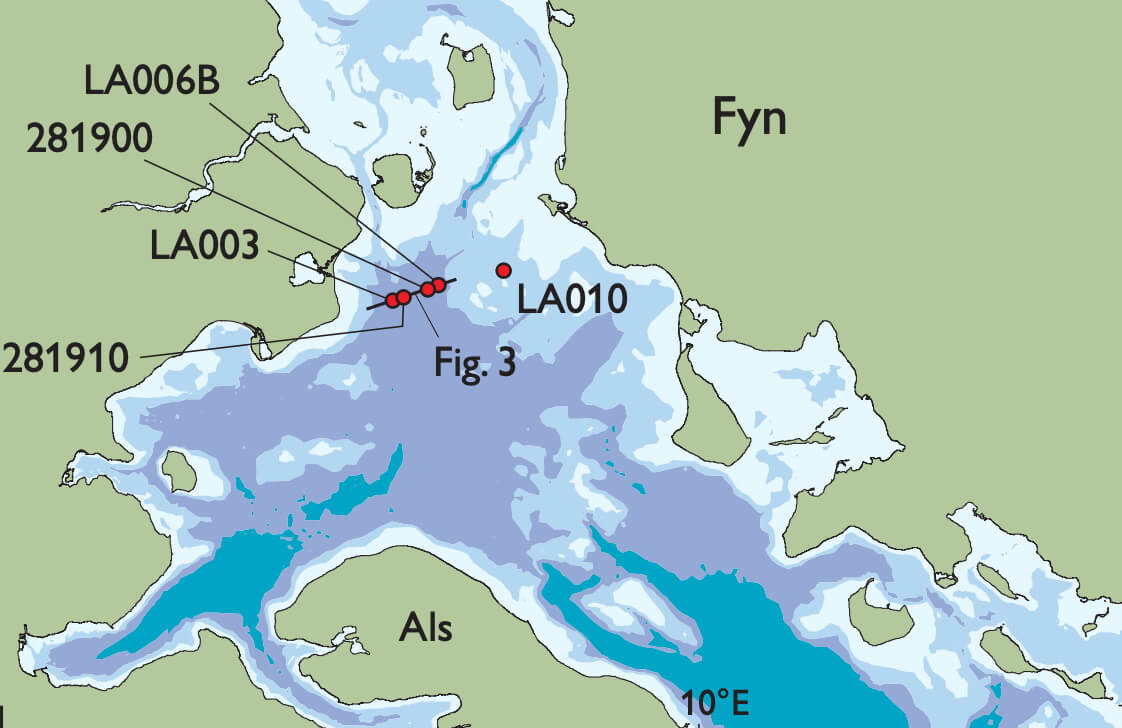
How to Cite
Share
Abstract
The brackish Baltic Sea and the more saline Kattegat are connected by three straits, Lillebælt, Storebælt and Øresund (Fig. 1). Of the three straits, Lillebælt is the narrowest, with 700 m at its narrowest point, widening out towards the south to around 25 km (Fig. 2). In the narrow parts of Lillebælt, water depths around 30–50 m are common. In the northern part of Lillebælt the depth is 16–18 m and in the southern part the depth is around 35 m. Storebælt and Øresund have played important roles as outlets during the history of the Baltic Sea, and their histories have been much discussed (Björck 1995; Bennike et al. 2004). In contrast, Lillebælt has received little attention. In this paper we present 11 new radiocarbon accelerator mass spectrometry (AMS) ages and propose a curve for Holocene relative shore-level changes in Lillebælt. We use the term shore-level changes rather than sea-level changes because we have constructed both lake-level and sea-level changes.
How to Cite
Share
Copyright (c) 2011 Ole Bennike, Jørn Bo Jensen

This work is licensed under a Creative Commons Attribution 4.0 International License.
Downloads
Edited by Ole Bennike, Adam A. Garde and W. Stuart Watt
This Review of Survey activities presents a selection of 19 papers reflecting the wide spectrum of activities of the Geological Survey of Denmark and Greenland, from the microscopic to the plate-tectonic level.
The Survey's activities in Denmark and surrounding areas are [...]









